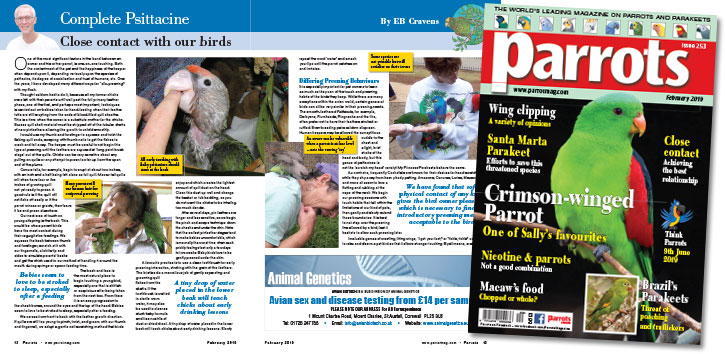
Complete Psittacine by Eb Cravens
One of the most significant factors in the bond between an owner and his or her parrot, is one-on-one touching. Both the contentment of the pet and the happiness of the keeper often depend upon it, depending variously upon the species of psittacine, its degree of socialisation and trust of humans, etc. Over the years, I have developed many different ways for “allo-preening” with my flock.
Though I seldom had to do it, because all my former chicks were left with their parents until well past the full primary feather phase, one of the first, and perhaps most important, techniques is carried out on babies taken for hand-feeding when their feather tufts are still erupting from the ends of blood-filled quill sheaths. This is a time when the owner is a substitute mother for the chicks. Excess quill shaft material must be stripped off of the tubular shafts of new pinfeathers allowing the growth to unfold smoothly.
I would use my thumb and forefinger to squeeze and twist the flaking quill ends, scraping with thumb nails to get the flakes to crack and fall away. The keeper must be careful to not begin this type of preening until the feathers are exposed at ‘long paint brush stage’ out of the quills. Chicks can be very sensitive about any pulling on quills or any attempt to preen too far up from the open end of the plume.
Buy Now!








Parrot Chat
Buyers Guides
Breeding articles